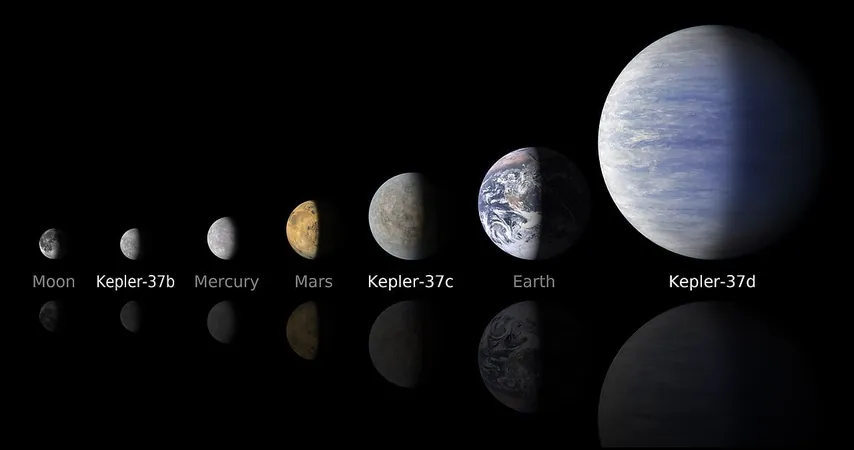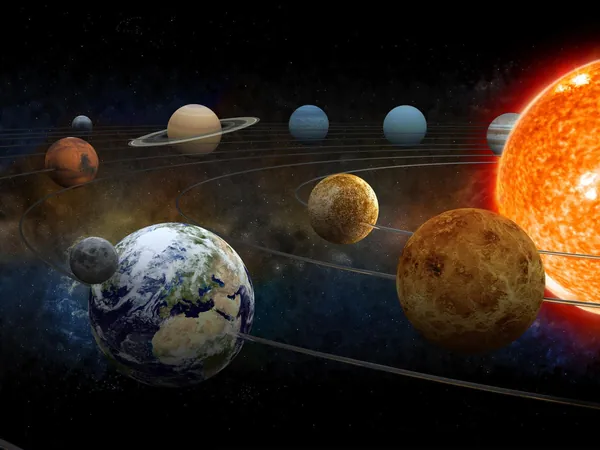
Unlocking the Secrets of the Galaxy's Enigmatic Steam Worlds
2025-08-30
Author: Charlotte
A New Era in Astrobiology: The Search for Alien Life
Imagine scouring a vast desert in search of water—this is akin to the quest for extraterrestrial life outside our Solar System. Among the most captivating targets are sub-Neptunes, planets that sit intriguingly between Earth and Neptune in size. These enigmatic worlds pique interest because their dimensions suggest they may be teeming with water, but not in the forms we recognize.
The Enigmatic Nature of Steam Worlds
Orbiting perilously close to their stars, these steam worlds are far too hot to harbor liquid oceans. Instead, they are enveloped in thick, steamy atmospheres that conceal layers of water in a remarkable "supercritical" state—an entirely different realm that scientists have replicated in laboratories on Earth. This complex phase of water behaves in ways that defy the simplicity of liquid or solid.
James Webb's Groundbreaking Discoveries
The James Webb Space Telescope has made significant strides by detecting steam on numerous sub-Neptunes, providing confirmation for theories that have circulated among astronomers for decades. With even more observations on the horizon, researchers are eager for enhanced tools to make sense of this mysterious data.
Facing Extreme Conditions
However, the challenge is immense. Existing models typically focus on icy moons like Europa and Enceladus, which are cold, small bodies with icy surfaces above liquid oceans. In contrast, sub-Neptunes weigh between 10 to 100 times more, facing crushing pressures and searing temperatures that foster water states unimaginable on icy moons.
The Fascinating World of Superionic Ice
Under these unimaginably intense conditions, water could even morph into a rare form known as "superionic ice." In this state, hydrogen ions move freely through an oxygen lattice, a phenomenon that has been reproduced in labs and is believed to exist deep within Uranus and Neptune.
Research Pioneers at UC Santa Cruz
A groundbreaking team from UC Santa Cruz, led by postdoctoral researcher Artem Aguichine, has developed models that embrace these exotic water phases and track their evolution over vast time scales. Aguichine emphasized the importance of understanding the common planets in our universe to shift the focus towards the less frequent, yet potentially habitable, exoplanets.
Preparing for Future Discoveries
This research is vital for upcoming missions, like the European Space Agency's PLATO telescope, which aims to uncover Earth-like planets nestled in habitable zones. The models crafted by Aguichine’s team not only help make predictions for future telescopes but also chart the course for humanity in its quest for life beyond Earth.
Why Understanding These Worlds is Crucial
Deciphering the behavior of water under extreme conditions is essential, given that steam worlds rank among the most common types of planets discovered so far. By delving into their mysteries, we're not only unlocking the secrets of distant realms but also shedding light on the fundamental processes that sculpt planetary systems across the cosmos.









 Brasil (PT)
Brasil (PT)
 Canada (EN)
Canada (EN)
 Chile (ES)
Chile (ES)
 Česko (CS)
Česko (CS)
 대한민국 (KO)
대한민국 (KO)
 España (ES)
España (ES)
 France (FR)
France (FR)
 Hong Kong (EN)
Hong Kong (EN)
 Italia (IT)
Italia (IT)
 日本 (JA)
日本 (JA)
 Magyarország (HU)
Magyarország (HU)
 Norge (NO)
Norge (NO)
 Polska (PL)
Polska (PL)
 Schweiz (DE)
Schweiz (DE)
 Singapore (EN)
Singapore (EN)
 Sverige (SV)
Sverige (SV)
 Suomi (FI)
Suomi (FI)
 Türkiye (TR)
Türkiye (TR)
 الإمارات العربية المتحدة (AR)
الإمارات العربية المتحدة (AR)